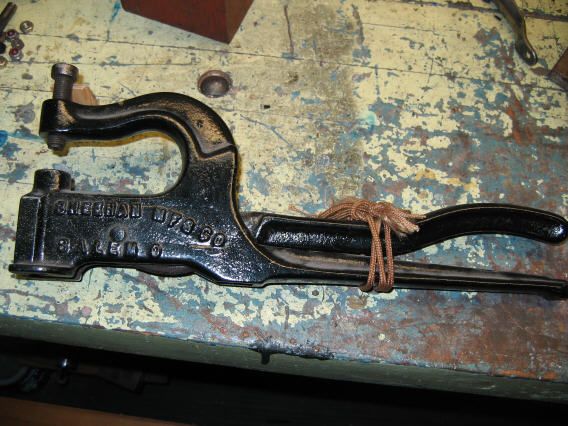I have had for a while a couple of rivet setters, which are probably for either split rivets or tubular rivets, possibly both, especially if the anvil is changed. Patent dates are well over 100 years ago.
One is a hand tool, the other is a bench tool.
The question is about the bench tool. The thing has a LOT of "ram" travel, but the extension of the "ram" is very small, maybe 0.1" above the frame. Clearly not enough to set a split rivet, but possibly fine for a tubular rivet.
Do these typically have a replaceable buck that drops into the hole for different rivet types? Was the ram specific to a particular type of rivet? Or did some bozo just cut this one off? (It does not look like that happened)


The thing as-is sets both types as well as can be expected for the anvil that needs a bit of touch-up. And I expect I can drop an extension in for longer travel. I might just make a new anvil and keep the original in case some later owner wants an "antique" without mods.
Mostly curious, also not sure of the anvil difference for split vs tubular (if any). A split rivet could have an anvil more like a wire crimper, but the alignment would be critical, so a regular circular type might be more practical.
One is a hand tool, the other is a bench tool.
The question is about the bench tool. The thing has a LOT of "ram" travel, but the extension of the "ram" is very small, maybe 0.1" above the frame. Clearly not enough to set a split rivet, but possibly fine for a tubular rivet.
Do these typically have a replaceable buck that drops into the hole for different rivet types? Was the ram specific to a particular type of rivet? Or did some bozo just cut this one off? (It does not look like that happened)


The thing as-is sets both types as well as can be expected for the anvil that needs a bit of touch-up. And I expect I can drop an extension in for longer travel. I might just make a new anvil and keep the original in case some later owner wants an "antique" without mods.
Mostly curious, also not sure of the anvil difference for split vs tubular (if any). A split rivet could have an anvil more like a wire crimper, but the alignment would be critical, so a regular circular type might be more practical.
.png)
Comment